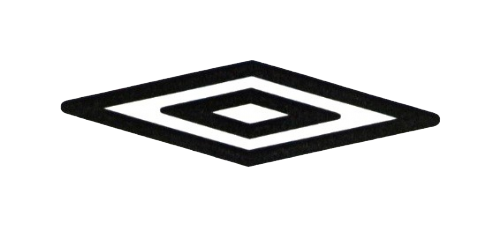UK Supreme Court affirms relevance of post-sale confusion for trade mark infringement for first time
Published on 8th July 2025
Realistic post-sale circumstances can be considered when assessing similarity and likelihood of confusion

The Supreme Court's decision in Iconix v Dream Pairs marks the first time that the UK's highest court has considered the relevance of post-sale confusion in trade mark infringement cases. The judgment is significant because:
- The Supreme Court has affirmed the concept of post-sale confusion, clarifying that realistic and representative post-sale circumstances can be taken into account when determining trade mark infringement.
- The Supreme Court also confirmed that post-sale confusion alone (that is, without confusion at the point of sale) can form the basis of the trade mark infringement claim.
- The judgment effectively widens the scope of protection for registered trade marks, opening the way for a likely increase in the deployment of post-sale confusion arguments.
Although the court ultimately allowed Dream Pairs' appeal, this was on the basis that the Court of Appeal overstepped its authority in substituting the first instance judge's conclusion with its own. The Supreme Court found against Dream Pairs' substantive trade mark law arguments and in doing so provided some welcome clarity on post-sale confusion.
Umbro v Dream Pairs
This dispute concerned a trade mark infringement claim brought by Iconix, the owner of the Umbro brand, against Dream Pairs.
Iconix holds UK registered figurative trade marks for its "double diamond" covering goods in class 25 for, among other things, articles of clothing (below left and middle).
| UK '668 | UK'459 | Dream Pairs |

| 
|  |
Iconix established that the Umbro trade marks have been used extensively on football boots in the UK since 1987. Dream Pairs have been making use of its sign in relation to footwear in the UK since 2018 (image above right).
No infringement in the High Court
Iconix alleged trade mark infringement under sections 10(2) and 10(3) of the Trade Marks Act 1994. It argued, in particular, that confusion was likely under section 10(2) when the marks were viewed in the context of the average consumer observing the Dream Pairs sign post-sale on shoes when viewed at an angle.
Mr Justice Miles did consider Iconix's arguments on post-sale confusion, but nevertheless found that there was only a "very faint" degree of similarity between the Umbro trade marks and the Dream Pairs sign. Accordingly, he found there was no likelihood of confusion and therefore no infringement.
Iconix's reversal of fortune at the Court of Appeal
Iconix appealed the High Court's decision. The Court of Appeal held that the first instance judge's conclusion that there was a very low degree of similarity was irrational when considered from any angle other than square on. It was also held that he had erred in principle by (i) carrying out a side-by-side comparison of the marks and the sign when assessing post-sale confusion and (ii) failing to appreciate that in the post-sale context the average consumer would see Dream Pairs' sign from an angle.
As a result of these perceived errors, the Court of Appeal undertook the assessment of similarity and confusion afresh, finding that that there was a moderately high degree of similarity in the post-sale context, particularly when the sign was viewed on a football boot by someone standing nearby and looking down at it. This was held to give rise to a likelihood of confusion and therefore constituted infringement.
Dream Pairs takes it to the Supreme Court
In the Supreme Court, Dream Pairs challenged the Court of Appeal's conclusion on the first instance's judge's assessment, arguing that Court of Appeal was not entitled to remake the infringement decision itself.
Beyond this overarching point, Dream Pairs also made two arguments of substantive trade mark law, which it said the Court of Appeal got wrong:
- The similarity issue. Dream Pairs alleged that in assessing similarity the court should be confined to considering the intrinsic features of the mark and the sign side-by-side and not take into account the post-sale context at this stage. If there is intrinsic similarity, it asserted that the court must then carry out a global assessment, which can take into account realistic and representative post-sale viewing angles.
- The confusion issue. Dream Pairs also argued that post-sale confusion should not be a self-standing basis for an infringement claim under s 10(2). It sought to restrict the circumstances in which post-sale confusion can be relied to circumstances where it involves confusion that affects or jeopardises the essential function of a trade mark as a badge of origin at the point of a subsequent sale or in a subsequent transactional context.
Dream Pairs' wins but not on points of trade mark law
Dream Pairs' case did not turn on it winning the two points of substantive trade mark law – indeed, it did not win on these points.
As for the similarity issue, the Supreme Court unanimously affirmed that post-sale circumstances can be taken into account for the purpose of establishing whether the sign and the mark are similar and, if so, the degree of similarity.
However, it was clear that the post-sale circumstances are restricted to "realistic and representative circumstances", so this is unlikely to be a concept that the courts will allow to be stretched too far. This means that some post-sale circumstances will not be relevant. Ambitious or contentious scenarios are unlikely to be accepted by the courts.
In considering the confusion issue, the Supreme Court endorsed the Court of Appeal's judgment in this case, namely that it is possible for use of a sign to give rise to a likelihood of confusion as a result of post-sale confusion even if there is no likelihood of confusion at the point of sale.
This means that post-sale confusion alone can form the basis of a trade mark infringement claim.
Should the Court of Appeal have remade the decision?
The Supreme Court was clear that the question of trade mark infringement in this case was a "classic example" of a multifactorial assessment. The overturning of multifactorial decisions by appellate courts is limited to certain circumstances – for example, if the judge was plainly wrong or there was a significant error of principle.
In this case, the Court of Appeal had held that the first instance judge's finding that there was a very faint similarity between the sign and the marks was irrational and that he had erred in principle when assessing the post-sale context.
The Supreme Court stated that this criticism was "misplaced" and went so far as to say that the reason the Court of Appeal concluded that the first instance judge fell into error was because of "their own firm view about similarity".
The Supreme Court concluded that it was "plain" that the first instance judge had given "careful consideration" to the post-sale context but did not find that it changed his conclusions about faint similarity and lack of likelihood of confusion.
Osborne Clarke comment
This case is important for the clarification the Supreme Court provides regarding the relevance of post-sale confusion to trade mark infringement cases. Brand owners will be pleased with the decision but will need to remember that, from a practical perspective, when creating a new logo, for example, they will need to factor in post-sale contexts to ensure they do not infringe similar logos. This will be particularly relevant to 2D shapes, which can be distorted when viewed at different angles.
It is possible that brand owners will now feel emboldened to challenge lookalike products based solely on post-sale confusion. This could particularly be the case in industries where logos are less static when the product is in use, for example, in the fashion industry.
However, it must be remembered that it is only "realistic and representative" circumstances that may be taken into account. Brand owners will therefore need to think carefully about how a competing mark is perceived in the real world, such as when a product is being worn, in order to rely on post-sale confusion and potentially increase their scope of protection.
Despite this very helpful clarification of trade mark law, the most surprising aspect of the judgment is that the Supreme Court felt that the Court of Appeal was wrong to interfere in this case. The Supreme Court made some strong comments on the Court of Appeal's approach, which are intended to be a reminder that appellate courts should not intervene just because they would have reached a different conclusion. Instead, they must ask whether the first instance judge was wrong because of an identifiable flaw.
It is likely that this will reduce the number of cases where we see the Court of Appeal or UKIPO appeal tribunals overturning multifactorial assessments. The Court of Appeal had felt compelled not to intervene in the recent Lidl v Tesco case even though they questioned the correctness of the first instance judge's decision. We may well see more judgments in this vein moving forward.






